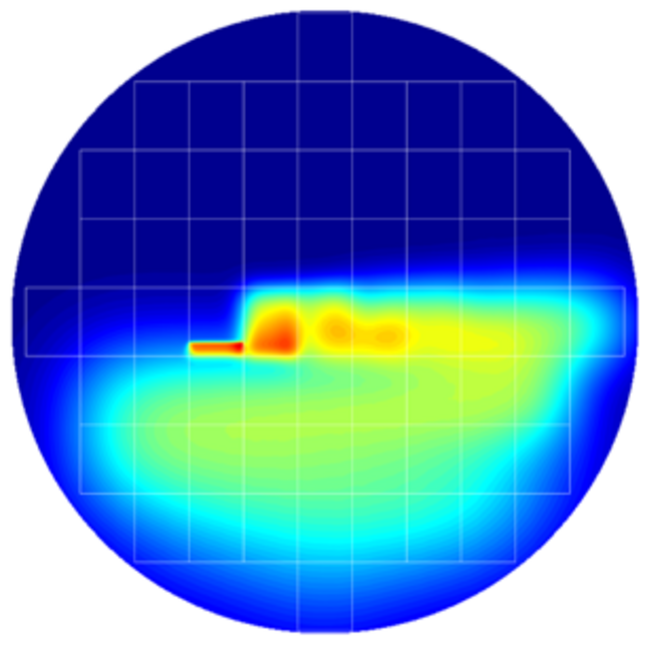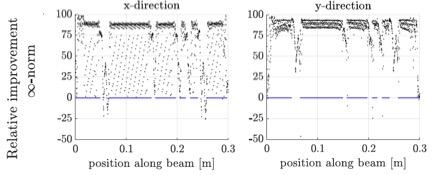Researcher in the Spotlight: David van den Hurk
Deformations of the wafer play a crucial role in the overall performance of the lithography tool

Hi, my name is David van den Hurk and I am undertaking research within the Control Systems research group at the Department of Electrical Engineering. My research concerns lithography machines in which deformations of the wafer play a crucial role in the overall performance of the lithography tool.
In the machine the wafer is supported by the wafer table and approximately 30,000 so-called burls, as shown in Figure 1. To reduce the wafer deformations, an active wafer table is suggested, where burls become actuators such that deformations of the wafer can be counteracted directly. I am investigating the control aspects of this system with such a large number of actuators.

Optimum actuator forces
We can define different disturbance sources each of which deforms the wafer differently. Some of these sources are static during wafer exposure and some vary. From a control point of view, the dynamic disturbances are more interesting to look at. One of these errors is, for example, thermal expansion due to exposure heat-load.
To control these errors we have made models which describe the thermo-mechanical behavior of the wafer caused by the scanning heat-load. This provides us with temperature and deformation distributions, as in Figure 2, which we use to optimize the actuator forces.
To describe the actuator influences, actuator forces are mapped to surface deformations. Then, based on our thermo-mechanical model we can predict the expected deformations, and using our actuator influence functions we can optimize the actuator force to enable the best possible compensation for the thermally induced deformations.

Scale of the challenge
The main challenge of this project lies in the spatio-temporal nature of the area of interest. Ultimately, the flatness of the wafer only matters in the exposure area, and this area moves over the wafer during exposures. Furthermore, the scale of the problem, with approximately 30,000 actuators, presents many computational challenges that need to be overcome. So far we have developed an efficient distributed feedforward controller for the cross-section of the wafer where we have been able to reduce the thermal induced deformations by up to about 64% in-plane, and up to about 81% out-of-plane.
Performance and efficiency
My research will be of particular value to people with an interest in large-scale models and distributed control. In other words, to lithography tool manufacturers who want to improve the performance of their machines, which is the ultimate goal of the active wafer table project. By helping to improve the performance of lithography scanners, it will become possible to create smaller chips. This will not only cut the cost of chip manufacturing but smaller chips are also more energy- and computationally-efficient.
My research complements that of James Muganda. In our active wafer table project he is looking at actuator concepts that can fulfill the requirements for the active wafer table project so we work together on actuator requirements, for example, and exchange information on a regular basis.